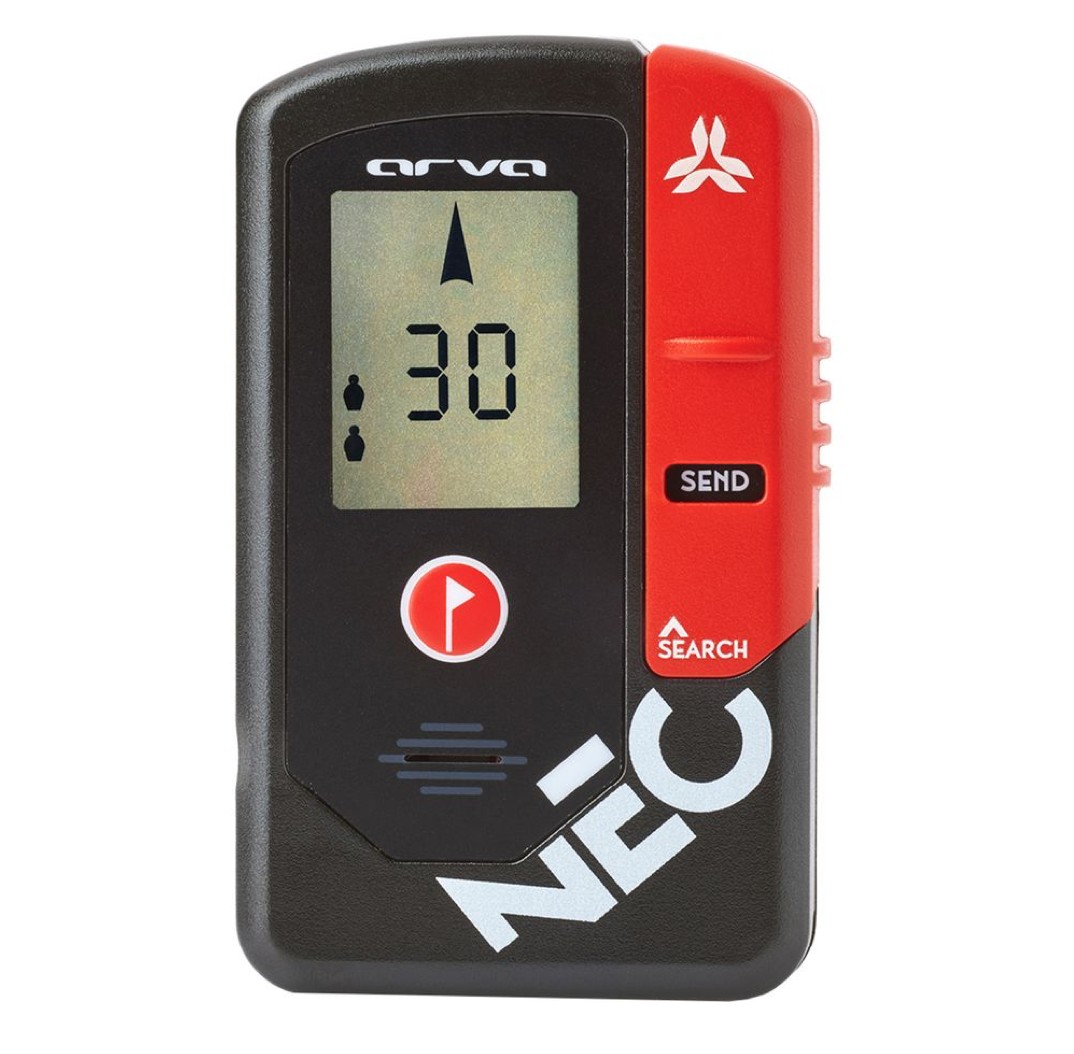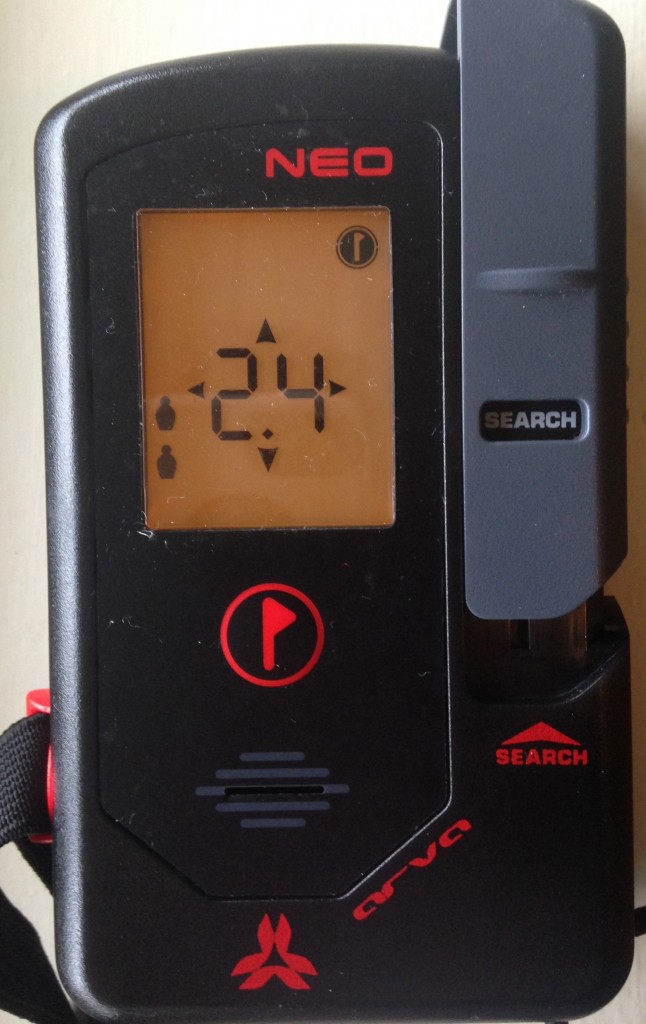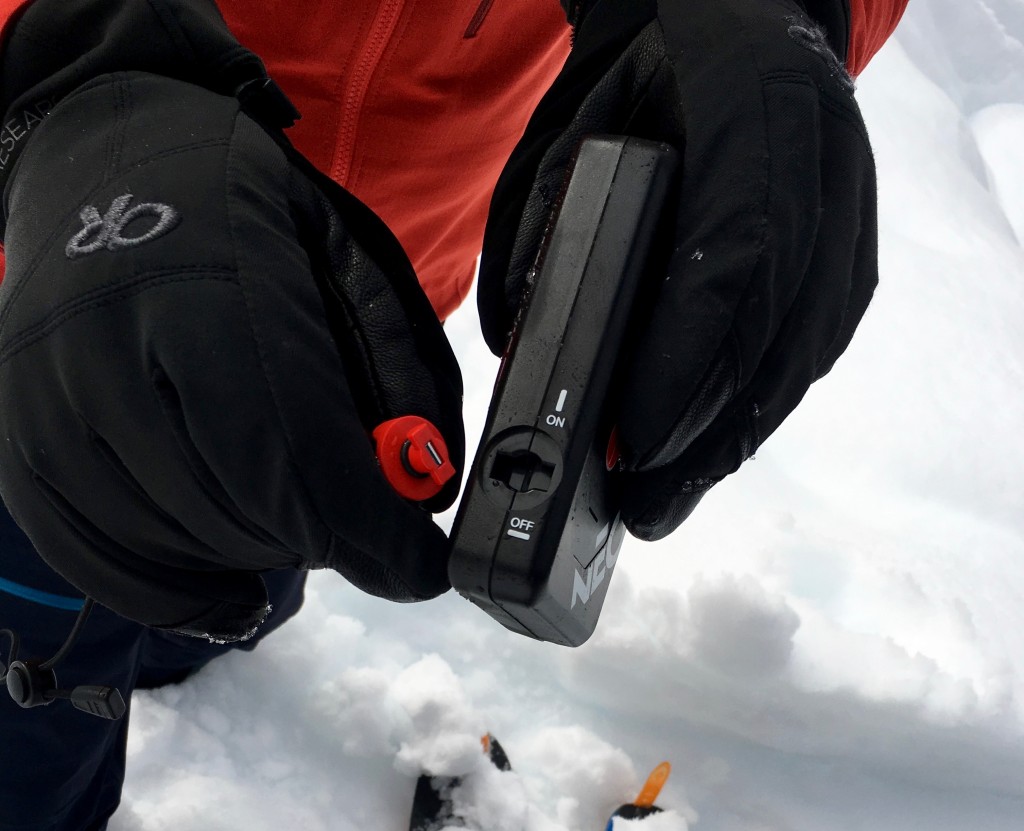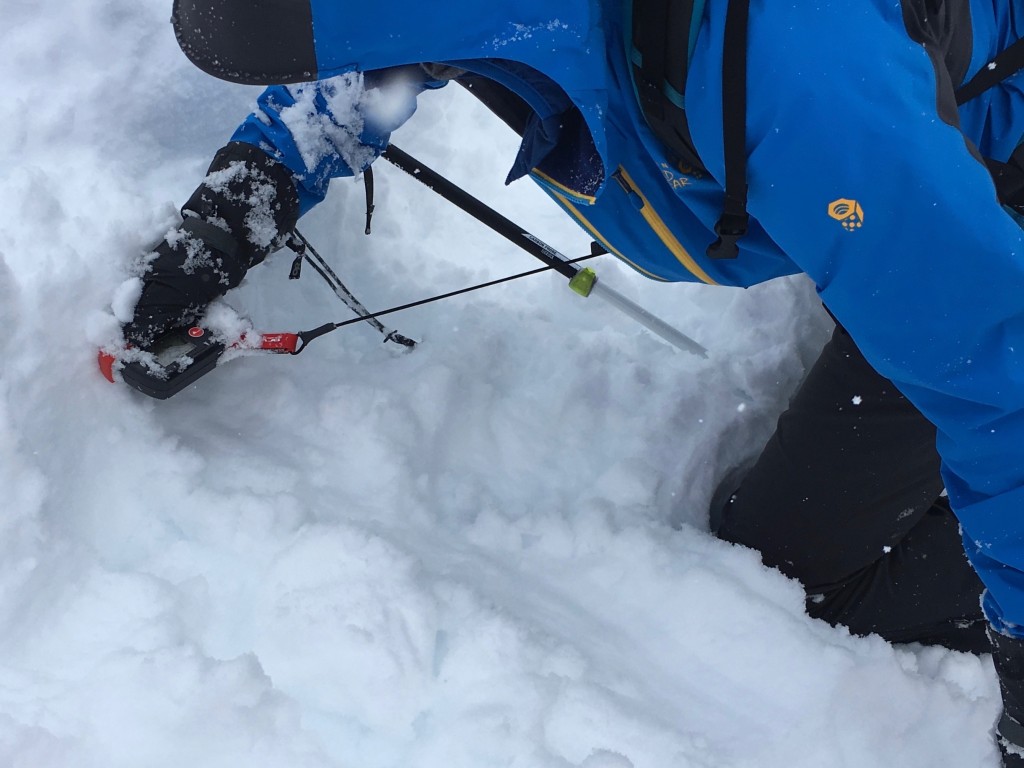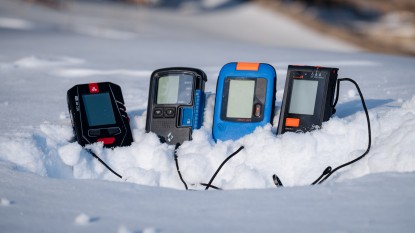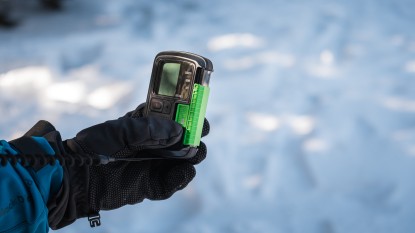Arva Neo Review
Our Verdict
Our Analysis and Test Results
Hands-On Review of the Neo
The Arva Neo was updated in 2016 to include an interference management system: if the software has too much interference from phones, radios, etc., it reduces the search range to better lock onto a signal. The harness and graphics have also seen small changes.
Range
The Neo has one of the best ranges of any all-digital beacon in our review. During our side-by-side comparisons, we found the maximum range of the Neo to be close to 60 meters and very comparable to other top contenders in our review, like the Mammut Barryvox S (70m maximum range), and the more basic Mammut Barryvox. It featured a slightly longer range than other top-scoring products, like the Ortovox S1+, Pieps DSP Pro, and Pieps DSP Ice. The Neo had a much greater range than similarly priced options, like the Backcountry Access Tracker2 ($335) or the Ortovox 3+ ($350). Something else that sets the Neo apart is that because of its Isotech Technology (see below), the Neo maintained its super long range regardless of orientation and had the longest range with the worst possible orientation in our review.
Isotech TechnologyMost modern beacons have three antennas, with two of them being used while searching for the signal. Most of the time, one of the two antennas is being used much less than the other, which affects the beacon's maximum range and, as a result, the search bandwidth. The Neo is one of the first beacons to give equal power to both antennas to increase the width of the search bandwidth to 60 meters, the widest of any all-digital beacon.
Ease of Finding a Single Victim
The Neo has one of the more straightforward user interfaces of any product in this review. The Arva Neo uses five directional arrows and distance units to help the user stay on the flux line. The Arva Neo also has a handy but less common feature of an arrow icon that displays meaning you have gone too far, and you need to turn around. This function can be set to show at three or five meters or turned off altogether.
Ease of Use in Fine Search and Speed
During the fine search, the Neo turns off its directional arrows at 3 meters and displays all four arrows pointing out in four opposite directions to remind the searcher to start bracketing shortly. The Neo's above-average processor speed was as fast or faster than several models that retail for $400 and above, and we felt like we could move the Neo as fast as almost any of the products during the bracketing stage of the search.
The only drawback of the Neo for more novice or less practiced users was that its directional arrows disappear at three meters compared to the BCA or Pieps models, which disappear at two meters. While this wasn't a big deal, we noticed that folks with less experience would consistently take slightly longer to bracket because they would often marginally lose track of their orientation and because their directional arrows would disappear further away, they would have more margin for error than with beacons that kept them for longer.
Ease of Use in Multiple Burials
The Neo has an easy-to-use flagging feature to assist a searcher in multiple burial situations. The Neo can display up to three buried icons to represent the number of signals it is picking up. Once you flag one of the victims, a flag appears next to them on the screen to help the rescuer keep track. If the user attempts to mark a victim that is too far away, the Neo will display a “No” on the screen indicating that that beacon will not be marked.
Something relatively unique about the Neo is that once you are within three or five meters (this distance can be set ahead of time) of the buried unit, an icon on the screen starts to flash, letting you know that you could flag that victim. This is an interesting feature because most of the time, you will still need to bracket the victim and probe them before moving on to the next person so others can start digging the first victim up. The only situation where this could be super useful is with many rescuers and a lot of beacon searchers where you realized you and another rescuer were both locked onto the same victim.
We thought the Neo was above average for multiple burials but still didn't perform quite as well as models geared more towards professionals like the Arva Axio, Mammut Barryvox S, or the Pieps DSP Pro or DSP Ice, where there were even more options and capabilities to help a rescuer manage a complex scenario. We don't think this is a problem for most recreational users, but if you are a ski guide or avalanche professional, this beacon doesn't do as well for high-level rescue exams.
Features
The Neo features a backlit screen for dark or nighttime rescues. The Neo, like many higher-end beacons, offers up-dateable software as well as a group check function. The Neo is loud. We liked this and thought that it helped us even more during a search, but while practicing, for some people, it might be a little much. Might be a good option for you if your hearing is on the way out.
Controls and InterfaceThe Neo turns on when you insert the “plug” attached to the harness into the side of the beacon and twist. This plug can also be removed from the harness to make the beacon more friendly for folks who like to wear it in an inner zippered pants pocket.
When the beacon is on, the controls are intuitive and easy to understand. To switch from Send to Search modes, simply slide the bar on the right-hand side of the unit upwards, similarly to the Pieps DSP Pro and Sport. The flagging function is activated by pressing the button with the visible red flag in a red circle. As a whole, we thought the Neo was one of the more natural models to use with as many features as it has.
Revert To SendThe Neo has a Revert to Send mode built into it that can be turned on or off. It can also be set to revert back to send after two, four, or eight minutes. Before it switches back to send mode, it gives a loud beep, and the rescuer simply presses the flagging button to keep searching.
Comfort to CarryThe Neo allows the user to remove the connector “plug” (that, when inserted, turns it on) from the harness and install it on the leash so you can wear it inside a zippered pants pocket instead of on the harness. For users who prefer to wear theirs in a harness, the Neoprene harness that comes with the Neo is nice and relatively easy to use and understand.
This is a great mid-level beacon that is well-suited to those looking for a few more functions than an entry-level model but don't need all the bells and whistles that a professional user requires.
Value
The Neo is priced in line with several other manufacturers' mid-level products and is slightly less than the more feature-rich Pieps DSP Pro. The Neo has a better range than all the beacons we mentioned, except the Barryvox. While you can spend more and get a beacon with more features than the Neo, we think that most users will find that the Neo has all the features they are likely to use the most, and without the extras that most users won't use.
Conclusion
The Arva Neo is a user-friendly and fully functional product with all the features that most backcountry users want, like a fast processor, solid flagging features, and fantastic range, but without some of the extra features that most backcountry users don't ever use. We think the Neo is simple enough for even very novice users to understand but advanced enough with all the right features to keep all but the most advanced ski guides and backcountry professionals satisfied. We loved the Neo's range, easy-to-use controls, and processor speed, and thought the multiple burial functions were a little complicated at first, but with a little practice, we got the hang of them quickly.


